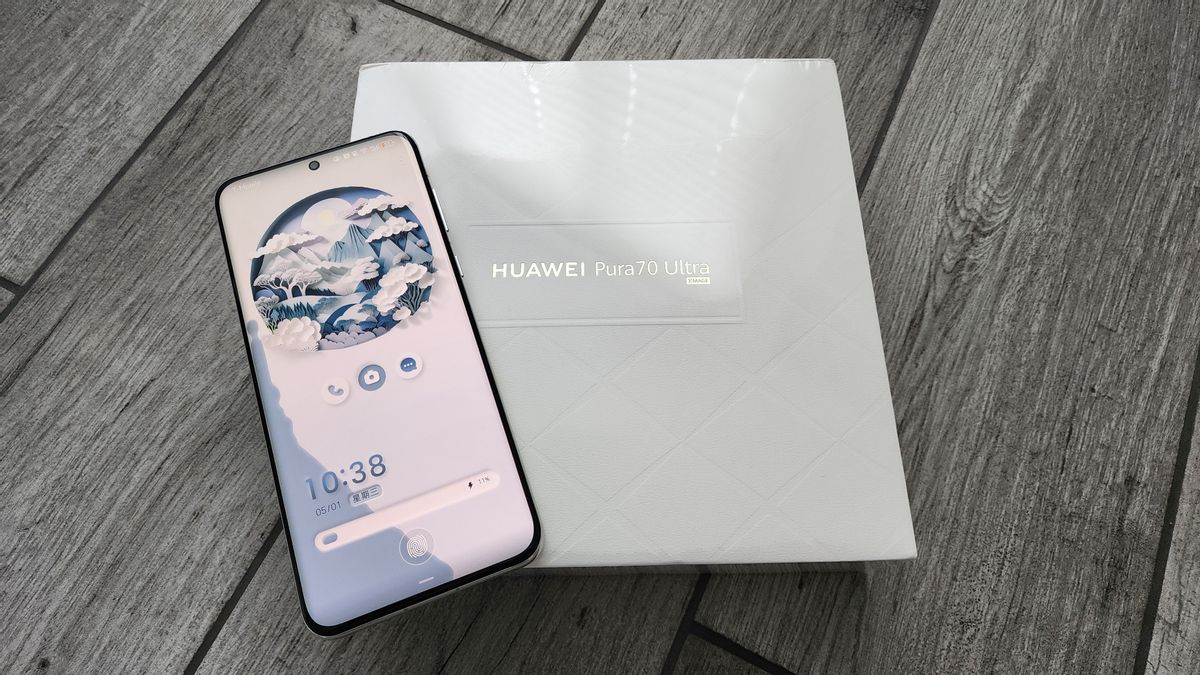JAKARTA - Analysis of the decomposition shows that the latest high-end phones from Huawei have more providers from China, including new flash memory storage chips and improved chip processing. This shows China's progress in achieving self-sufficiency in technology.
The online technology repair company iFixit and consultant TechSearch International examined the interior of the Huawei Technologies' Pura 70 Pro, finding a NAND memory chip they said was likely packed by Huawei's internal chip unit, HiSilicon, and several other components made by a Chinese provider. This finding has never previously been reported.
Huawei's return to the high-end smartphone market after four years of US sanctions was widely observed by US competitors and politicians for being a symbol of the increasing US-China trade friction and China's efforts to achieve self-sufficiency in technology.
The company also found that the Pura 70 mobile phone runs on a state-of-the-art processing chipset made by Huawei named Kirin 9010 which is likely only a slightly upgraded version of the advanced Chinese chip used by the Mate 60 Huawei series.
"While we cannot give the right percentage, we will say the use of domestic components is high, and definitely higher than Mate 60," said Shahram Mokhtari, iFixit's main decomposition technician.
"It's about self-sufficiency, all this, everything you see when you open a smartphone and see whatever Chinese manufacturers make, it's all about self-sufficiency," added Mokhtari.
Huawei itself declined to comment on the report.
Huawei launched four Pura 70 smartphone models in late April and the series quickly sold out. Analysts say it is likely to take more market share from iPhone manufacturer Apple, while policymakers in Washington are questioning the effectiveness of US restrictions on the telecommunications equipment giant.
A previous analysis by a decomposition company like TechInsights from Mate 60, launched in August last year, found the phone using DRAM and NAND memory chips made by SK Hynix from South Korea. SK Hynix said at the time that they were no longer doing business with Huawei and analysts said the chips were likely to come from stock.
BACA JUGA:
Pura 70 still contains DRAM chips made by SK Hynix, iFixit and TechSearch found, but the NAND flash memory chip is likely packed by the Huawei HiSilicon unit this time and consists of dead NAND each with a capacity of 1 terabit. This is comparable to the products made by major flash memory manufacturers such as SK Hynix, Kioxia, and Micron.
However, companies cannot definitively identify wafer manufacturers because the sign on the NAND die is unknown. However, iFixit added that they believed that HiSilicon might have also produced memory controllers.
"In our decomposition, our chip ID expert has identified it as a specific HiSilicon chip," Mokhtari said. SMIC did not respond to a request for comment.
IFixit and TechSearch's analysis of the processors used by Pura 70 Pro also suggests that Huawei may only make gradual improvements in its ability to manufacture advanced chips with Chinese partners within months of the launch of the Mate 60 series.
The processor is similar to the one used in the Mate 60 series produced for Huawei by Semiconductor Manufacturing International Corp (SMIC) using the manufacturing process of N+2 7 nanometers belonging to the Chinese chip factory, they said.
"This is significant because news about 9000S at the 7nm node caused a bit of panic last year when US legislators were faced with the possibility that sanctions imposed on Chinese chip manufacturers may not slow down their technological advances," said iFixit. "The fact that 9010 is still a 7nm process chip, and that this chip is so close to 9000S, may seem to suggest that China's chip manufacturing has indeed slowed down."
However, he warned against underestimating Huawei, saying that SMIC is still expected to go into a 5nm manufacturing node before the end of the year.
SMIC did not respond to a request for comment.
The English, Chinese, Japanese, Arabic, and French versions are automatically generated by the AI. So there may still be inaccuracies in translating, please always see Indonesian as our main language. (system supported by DigitalSiber.id)













